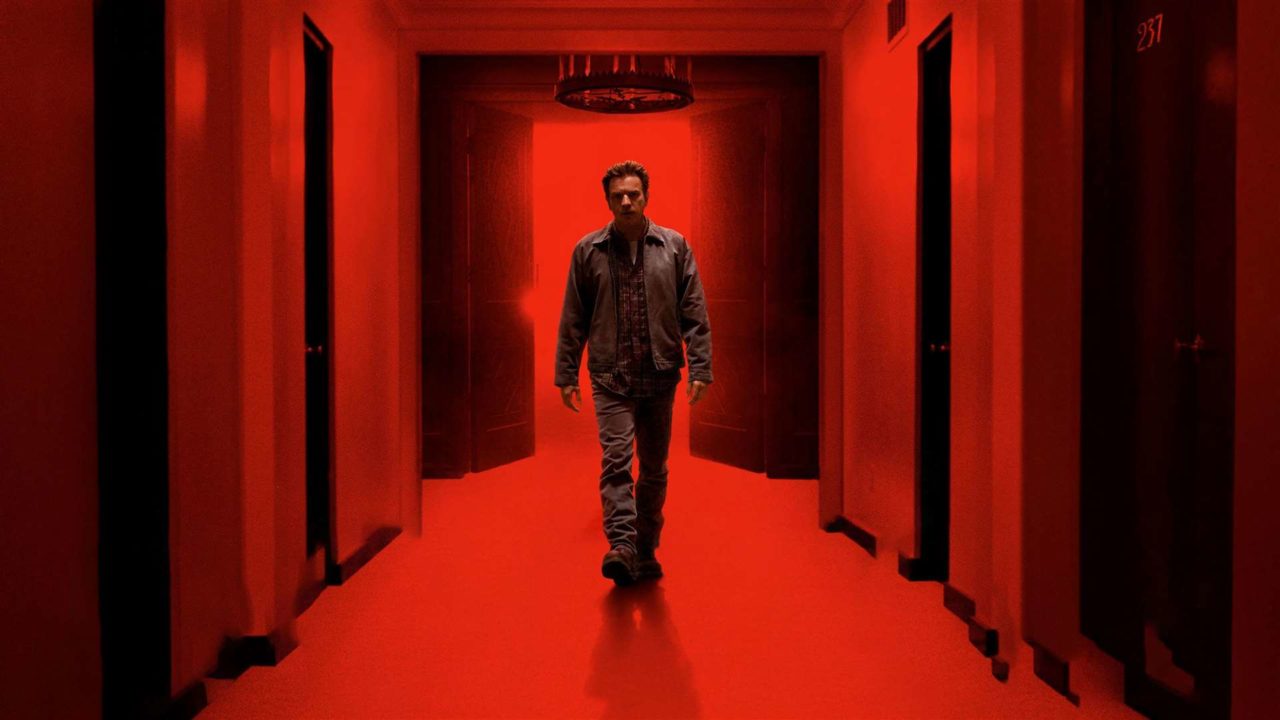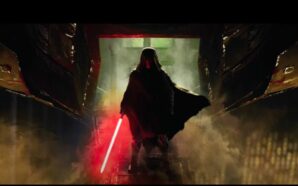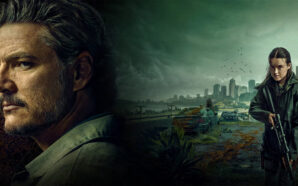How do you make a sequel to The Shining? Your first thought is probably “don’t”, but this is Hollywoodland and such things have to come to pass. The answer: make a completely different kind of movie. A sequel that’s equal parts connected to the original masterpiece of horror and something unique unto itself. That’s what Doctor Sleep has managed to accomplish and now after watching the film, I think the idea of making a sequel to The Shining – an idea that once seemed so treacherous and treasonous – is a stroke of genius. The new film marks a brilliant combination of Stephen King’s increasingly weird and oddly heart-warming brand of horror and Stanley Kubrick’s much more cold and distant stamp on the genre, which King himself openly states his dislike. It seemed like an impossible task and yet you can watch it at your local multiplex right now.
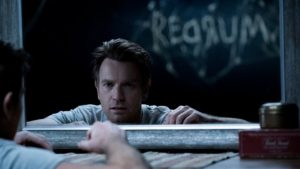 Doctor Sleep picks up decades after The Shining and sees Danny Torrance trying to bury the past and smother his psychic abilities with alcohol as he lives a vagabond life. But the dead don’t stay that way for Dan and the living prove just as dangerous as an RV-driving group of psychic vampires (think Near Dark) hunt for those with the Shining as a way to secure immortality. That’s right, psychic vampires that literally suck the Shining, or Steam as they call it, out of those who possess the ability so they can live forever. That’s about as far away from the largely psychological isolationist horror of The Shining, where the threat was a man with an axe and the extreme cold, as you can get. And somehow, it works. The film navigates its own path and while The Shining informs the plot and characters, Doctor Sleep expands the world and concerns itself with something different altogether, brilliantly making it almost incomparable to the original film.
Doctor Sleep picks up decades after The Shining and sees Danny Torrance trying to bury the past and smother his psychic abilities with alcohol as he lives a vagabond life. But the dead don’t stay that way for Dan and the living prove just as dangerous as an RV-driving group of psychic vampires (think Near Dark) hunt for those with the Shining as a way to secure immortality. That’s right, psychic vampires that literally suck the Shining, or Steam as they call it, out of those who possess the ability so they can live forever. That’s about as far away from the largely psychological isolationist horror of The Shining, where the threat was a man with an axe and the extreme cold, as you can get. And somehow, it works. The film navigates its own path and while The Shining informs the plot and characters, Doctor Sleep expands the world and concerns itself with something different altogether, brilliantly making it almost incomparable to the original film.
The Shining is a cold film. Not just because of the temperature and mounds of snow encroaching on the Overlook hotel, but in the direction and storytelling too. Stephen King certainly writes some twisted and brutal horror but his books often have a warmth and humanity to them, and the best film adaptations latch onto that. Look no further than The Shawshank Redemption, Stand by Me or even the more recent IT. In adapting the novel, much to King’s disdain, Kubrick extracted that Stephen King spirit. Jack Torrance was never the loving father or husband but seemingly slightly distant and dark from the beginning, and you don’t feel any amount of love in the family unit, despite all of Wendy Torrance’s constant crying and wailing for her son’s safety. I do love the film, although while it’s technically superb it’s also emotionally shallow, something Christopher Nolan seems to have continued in many of his films. Doctor Sleep on the other hand has that warmth and classic King heart. You not only care for Dan and empathise with his struggle to stay sober but with new character Abra Stone and her family too. The bond that’s formed between Abra and Danny is the emotional core of the film and is strong throughout. It’s obviously paralleling the bond between Danny and Dick Hallorann in The Shining but here it’s an actual connection rather than just a plot device.
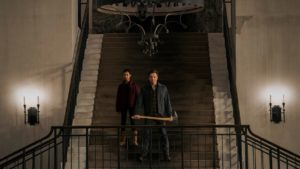 Not only does Doctor Sleep translate the warmth of Stephen King’s work but his aforementioned weirdness too. Many films try and suppress that side of King’s books – giant space turtle in IT, anyone? – but Doctor Sleep embraces it. While there was nothing of the sort in the more straightforward The Shining, Doctor Sleep has the aforesaid immortal vampiric psychics, extractable life essence, remote-viewing that essentially lets characters fly, telekinesis and Inception-style “whose mind are we in” shared dreams/visions. But the third act sees a return to the Overlook hotel, just as we saw it in Kubrick’s earlier film, and the two worlds – two completely different styles of film – surprisingly manage to fit together and make for a wonderful sequel. The weirdness and more blockbuster-style of horror continues but the more ambiguous psychological dread and the iconic visuals of The Shining returns. The recreation of the Overlook is incredible to witness and the production design is impeccable, matching what we first saw 39 years ago. Just seeing that orange carpet gave me goosebumps, let alone the music.
Not only does Doctor Sleep translate the warmth of Stephen King’s work but his aforementioned weirdness too. Many films try and suppress that side of King’s books – giant space turtle in IT, anyone? – but Doctor Sleep embraces it. While there was nothing of the sort in the more straightforward The Shining, Doctor Sleep has the aforesaid immortal vampiric psychics, extractable life essence, remote-viewing that essentially lets characters fly, telekinesis and Inception-style “whose mind are we in” shared dreams/visions. But the third act sees a return to the Overlook hotel, just as we saw it in Kubrick’s earlier film, and the two worlds – two completely different styles of film – surprisingly manage to fit together and make for a wonderful sequel. The weirdness and more blockbuster-style of horror continues but the more ambiguous psychological dread and the iconic visuals of The Shining returns. The recreation of the Overlook is incredible to witness and the production design is impeccable, matching what we first saw 39 years ago. Just seeing that orange carpet gave me goosebumps, let alone the music.
While the film becomes a winning combination of King and Kubrick, it’s another name that deserves most of the credit: writer/director Mike Flanagan. It’s he who managed to perfect the balance between the two and adapt Stephen King’s book (which I’m reading at the moment) masterfully while also tapping into the legacy of the film version of The Shining, rather than just the book, making such an unexpectedly great sequel. After Doctor Sleep, The Haunting of Hill House and his adaptation of Gerald’s Game, Flanagan has proven to be one of the best horror filmmakers working today – Hell, just one of the best filmmakers working today full stop – and I eagerly anticipate his next project.
The rest of this article contains spoilers for Doctor Sleep. You have been warned.
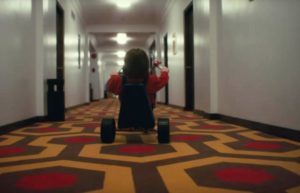 Returning to Kubrick’s Overlook is a cinematic delight, from the long mountain drive accompanied by that chilling music, the painstaking recreation of the original set and the dreaded hedge maze. It would have been cool to see some topiary animals come to life like in the novel of The Shining but what does get adapted from the original book is the ultimate fate of the hotel. The temperamental boiler of the Overlook proves to be cause of the haunted building’s destruction as Dan sacrifices himself to destroy the hotel and maybe some of the spirits within, with the film drawing to a close as the Overlook burns. The destruction of the hotel, along with Dick Hallorann’s fate, was one of the biggest changes Kubrick made to the film and Stephen King was displeased with this, so it’s fascinating to see that almost 4 decades later King can witness Kubrick’s converse vision of the Overlook be incinerated.
Returning to Kubrick’s Overlook is a cinematic delight, from the long mountain drive accompanied by that chilling music, the painstaking recreation of the original set and the dreaded hedge maze. It would have been cool to see some topiary animals come to life like in the novel of The Shining but what does get adapted from the original book is the ultimate fate of the hotel. The temperamental boiler of the Overlook proves to be cause of the haunted building’s destruction as Dan sacrifices himself to destroy the hotel and maybe some of the spirits within, with the film drawing to a close as the Overlook burns. The destruction of the hotel, along with Dick Hallorann’s fate, was one of the biggest changes Kubrick made to the film and Stephen King was displeased with this, so it’s fascinating to see that almost 4 decades later King can witness Kubrick’s converse vision of the Overlook be incinerated.
While overall I like Doctor Sleep a lot, there are a few things, most of which relate to the connections to The Shining, which I have issues with. For the most part I commend Flanagan as his team for the balance of new and old and the choice to recreate certain things rather than rely on footage from the previous film, but I found the return of Jack Torrance distracting. While most films these days would use CGI to digitally de-age or recreate Jack Nicholson’s performance, Doctor Sleep instead chooses not to and has another actor, made up to look like the Jack we know, play the part. I wasn’t sure if the character, now taking the position of Lloyd the barman, was supposed to actually be Jack or just the hotel playing tricks to make someone look like him to taunt Dan. It’s revealed to be the former but I was confused just because it didn’t look enough like him, especially with the profile shot we were shown. What’s more is that he didn’t sound anything like Jack Nicholson, who has a very distinctive voice, when the new young Danny and Wendy we see at the start of the film do look and sound (I think they may have tweaked their voices digitally) very much like they do in The Shining.
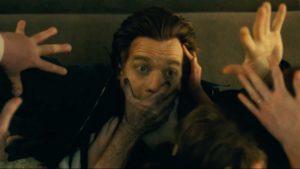 This reluctance to show Nicholson’s Torrance also means we didn’t get to see the famous photograph from the final shot of Kubrick’s film. I think it’s a shame Dan never laid eyes on it. But Dan does follow in his father’s footsteps by becoming an axe-wielding child hunter himself during the climax of the film, getting possessed after unleashing the full power of the Overlook’s ghostly residents on the villainous Rose the Hat. While you can explain it away that Dan’s powers and the strength of the spirits are the differing factors, I don’t like how easy Dan is possessed compared to his father in the original. That’s the one detail I feel comes close in the sequel to ruining something from The Shining. That film keeps everything wonderfully ambiguous as to how much of Jack Torrance’s actions are down to ghostly possession, manipulation by the spirits, underlying madness, cabin fever, writer’s block and alcoholism. But now those subtleties are ejected and we know that the hotel can completely possess someone even if they don’t want to let it in.
This reluctance to show Nicholson’s Torrance also means we didn’t get to see the famous photograph from the final shot of Kubrick’s film. I think it’s a shame Dan never laid eyes on it. But Dan does follow in his father’s footsteps by becoming an axe-wielding child hunter himself during the climax of the film, getting possessed after unleashing the full power of the Overlook’s ghostly residents on the villainous Rose the Hat. While you can explain it away that Dan’s powers and the strength of the spirits are the differing factors, I don’t like how easy Dan is possessed compared to his father in the original. That’s the one detail I feel comes close in the sequel to ruining something from The Shining. That film keeps everything wonderfully ambiguous as to how much of Jack Torrance’s actions are down to ghostly possession, manipulation by the spirits, underlying madness, cabin fever, writer’s block and alcoholism. But now those subtleties are ejected and we know that the hotel can completely possess someone even if they don’t want to let it in.
Going into Doctor Sleep, all I was hoping for was that it wasn’t a tarnishing failure, and coming out of the movie I was happy to deem it a great success. Mike Flanagan did the impossible and made a largely satisfying sequel to the once-thought-untouchable classic that connects to The Shining while simultaneously having its biggest strength be how unique and standalone it feels. It’s a sequel to a film Stephen King hates that managed to please Stephen King, and King fans (including me), while also not disrespecting Kubrick’s classic and its fans (also me). Flanagan managed to balance the sensibilities of both creative minds and, with his own flair, produce a terrific film.
Have you seen Doctor Sleep? Let me know in the comments and be sure to geek out with me about TV, movies and video-games on Twitter @kylebrrtt.




